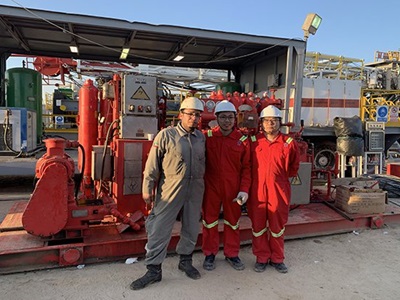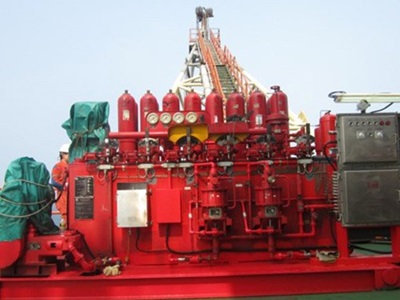Blowout Preventers (BOPs) are critical safety devices in the oil and gas industry, designed to prevent the uncontrolled release of crude oil or natural gas from a well. Ensuring the integrity and functionality of these devices is paramount for the safety of the rig crew, the environment, and the overall success of drilling operations. This article provides a comprehensive inspection checklist for BOPs, emphasizing the importance of regular maintenance and thorough inspections.
Blowout Preventers are large, specialized valves used to seal, control, and monitor oil and gas wells. They come in different types, including ram and annular BOPs, each serving a specific function in preventing blowouts. A BOP system typically consists of multiple components, including rams, annular preventers, control systems, and choke and kill lines. The complexity and critical nature of BOPs necessitate a detailed and structured approach to their inspection and maintenance.

Regular inspections of BOPs are crucial for several reasons. First and foremost, they ensure the safety of personnel and the environment by preventing blowouts. Inspections also help in maintaining compliance with industry regulations and standards, such as those set by the American Petroleum Institute (API). Furthermore, well-maintained BOPs contribute to the efficiency and reliability of drilling operations, reducing downtime and operational costs.
Before beginning the inspection, it's essential to gather all relevant documentation, including the BOP's maintenance history, manufacturer's guidelines, and any previous inspection reports. Inspectors should be thoroughly trained and familiar with the specific type and model of the BOP being examined. Proper preparation ensures a systematic and thorough inspection process.
Exterior Condition
Start with a visual inspection of the BOP's exterior. Check for any signs of corrosion, cracks, or other physical damage. Pay close attention to the condition of paint and coatings, which protect the BOP from harsh environmental conditions. Any abnormalities should be documented and addressed promptly.
Connections and Bolts
Inspect all connections, bolts, and flanges for signs of wear or damage. Ensure that all bolts are properly torqued according to the manufacturer's specifications. Loose or damaged bolts can compromise the integrity of the BOP, leading to potential failures.
Control Systems
Test the BOP control systems to ensure they are functioning correctly. This includes checking the hydraulic and pneumatic systems that operate the BOP's various components. Verify that all control panels and indicators are operational and accurately reflect the status of the BOP.
Ram and Annular Preventers
Operate each ram and annular preventer to ensure they open and close smoothly. Check for any leaks or irregularities in their movement. For ram BOPs, inspect the ram blocks for wear and tear, and ensure they are properly lubricated. Annular preventers should be tested for their ability to seal around different sizes and types of pipe.
Pressure testing is a critical part of the BOP inspection process. It involves subjecting the BOP to high-pressure conditions to ensure it can maintain a seal under operating pressures.
Low-Pressure Test
Conduct a low-pressure test to identify any initial leaks or weaknesses in the system. This test is typically performed at pressures around 250 to 300 psi. Monitor the BOP for any pressure drops, which could indicate a leak.
High-Pressure Test
Following a successful low-pressure test, proceed with a high-pressure test. This test is performed at the BOP's maximum rated pressure. Carefully monitor the BOP for any signs of leakage or deformation. High-pressure tests are essential to confirm the BOP's ability to withstand operational pressures.
Detailed Reporting
After completing the inspection, compile a detailed report documenting all findings. Include descriptions of any issues identified, corrective actions taken, and recommendations for future maintenance. Clear and thorough reporting is crucial for tracking the BOP's condition over time and planning future inspections.
Regulatory Compliance
Ensure that the inspection and reporting processes comply with relevant industry regulations and standards. This includes maintaining accurate records and making them available for review by regulatory bodies if required.
Scheduled Maintenance
Based on the inspection findings, schedule any necessary maintenance or repairs. Regular maintenance tasks may include replacing worn components, reapplying protective coatings, and performing additional functional tests. Adhering to a strict maintenance schedule helps prevent unexpected failures and extends the life of the BOP.
Emergency Repairs
In the event of a critical issue identified during the inspection, prioritize emergency repairs to restore the BOP's functionality. This may involve bringing in specialized technicians or equipment to address the problem promptly.
Ongoing Training
Ensure that all personnel involved in BOP inspections and maintenance receive ongoing training. Staying up-to-date with the latest industry standards, technological advancements, and best practices is essential for maintaining a high level of safety and efficiency.
Feedback and Improvement
Encourage a culture of continuous improvement by regularly reviewing inspection processes and incorporating feedback from inspectors and technicians. This approach helps identify areas for improvement and enhances the overall effectiveness of the inspection program.

Blowout Preventers are vital components in the oil and gas industry, playing a crucial role in ensuring the safety of drilling operations. Regular and thorough inspections are essential to maintain the integrity and functionality of these devices. By following a comprehensive inspection checklist, operators can identify potential issues early, perform necessary maintenance, and comply with industry regulations. Prioritizing safety and meticulous inspections not only protects personnel and the environment but also contributes to the success and reliability of drilling operations.
By continuing to use the site you agree to our privacy policy Terms and Conditions.